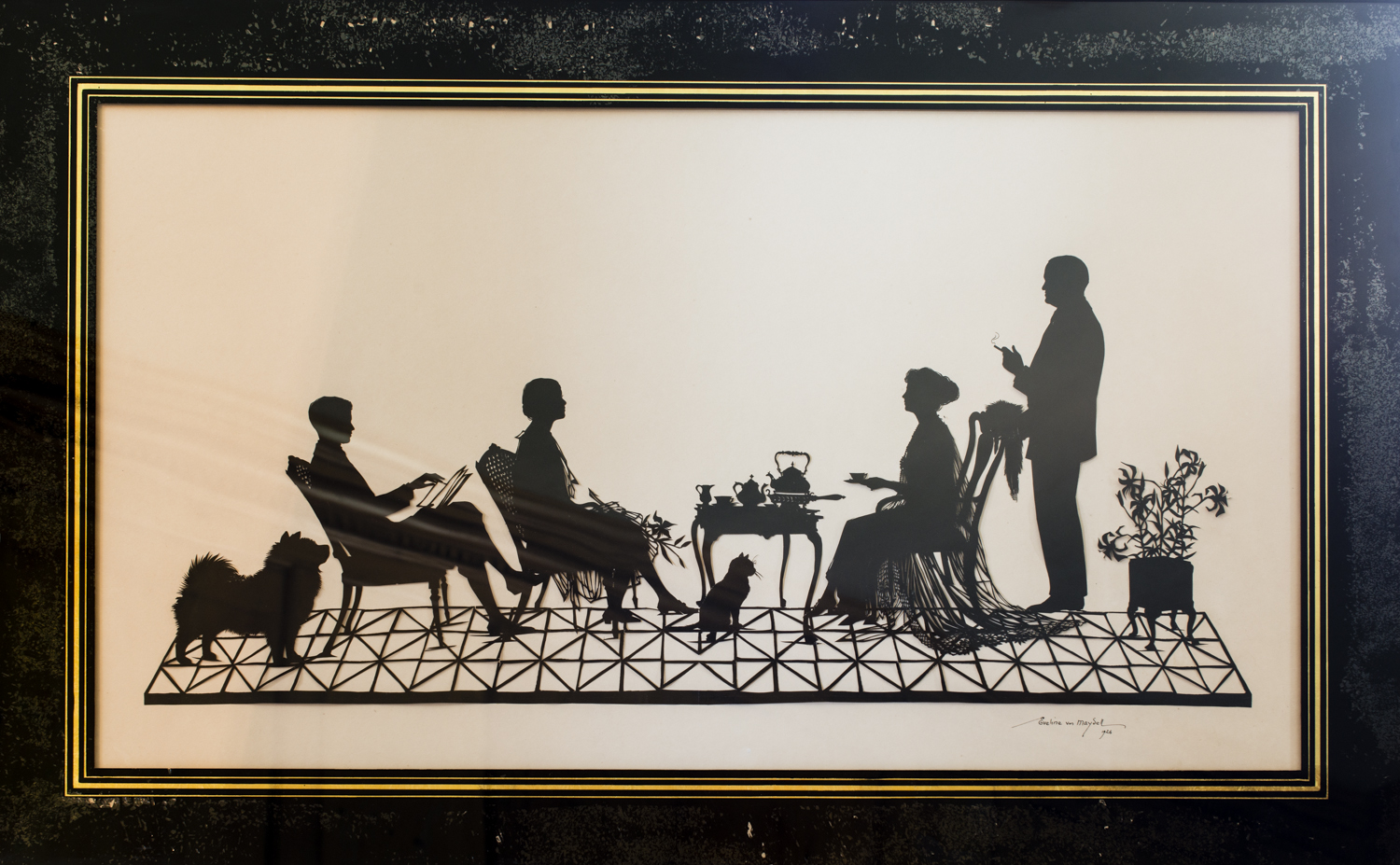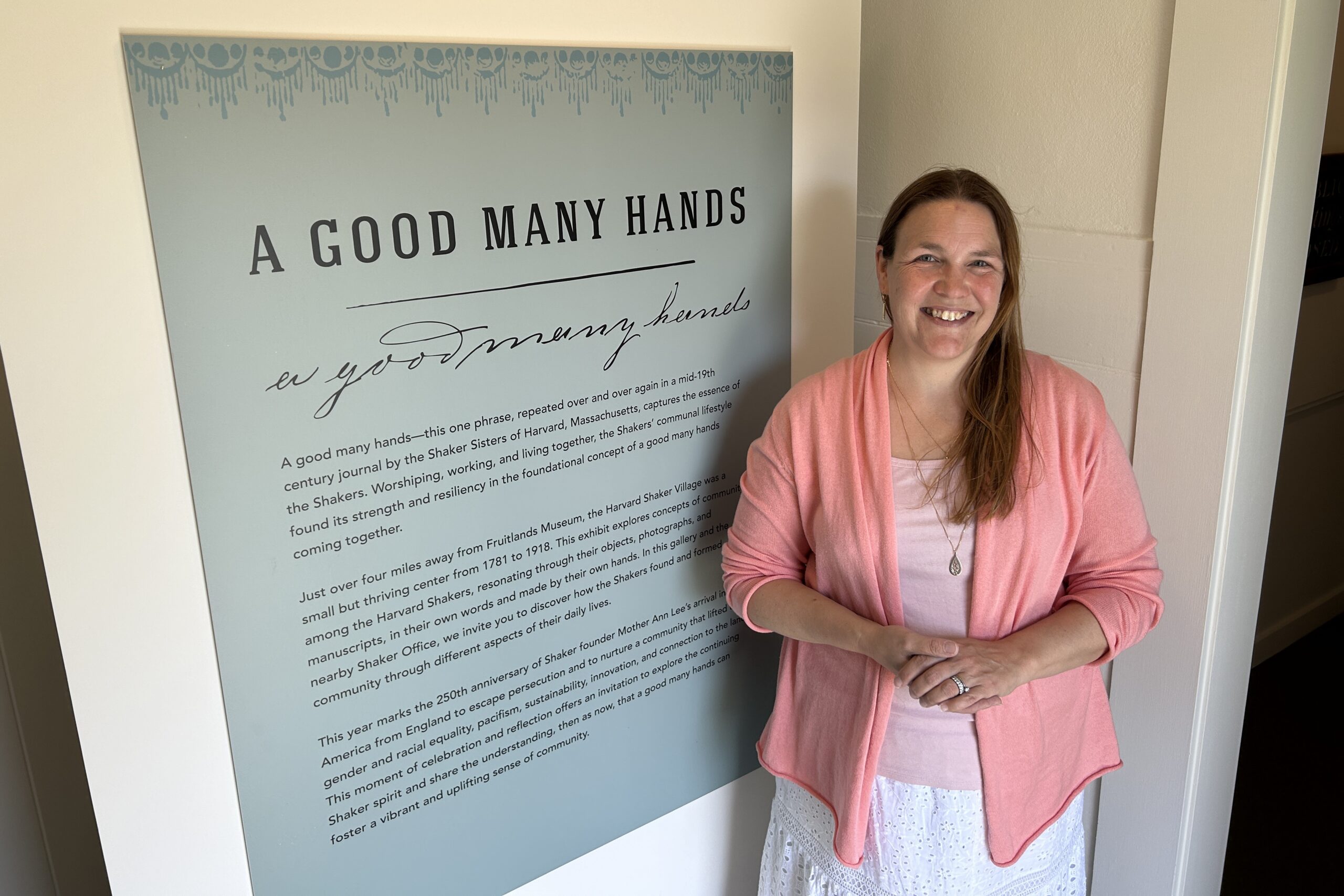In celebration of Women’s History Month, we are shining our Art Spotlights this March on women artists represented in the Crane collection. This week, we feature the life and work of silhouette artist Eveline von Maydell (1890-1926) who created the unique and rather remarkable family portrait silhouette, The Crane Family at Tea, signed and dated 1926.
Baroness Eveline von Maydell was a Baltic-German artist born in Iran who studied drawing in Estonia, Latvia, Russia and Germany. The creative peak of her career was between world wars, when she lived and worked in Germany, the U.S. and Estonia. In 1914, she married Baron Guido Nicholai Georg von Maydell of Estonia. In 1922 (post WWI), she moved to America, where she first worked as an artist for New York’s Museum of Natural History. There she honed her skills in portraying animals, which became one of her specialties. After New York, she worked as a freelance artist in Chicago and Boston. Von Maydell gained much notoriety when her silhouettes were exhibited at the Corcoran Gallery in Washington, D.C., in 1925, and again in the 1940s. She moved to Portugal in 1950 and died there in 1962.
Von Maydell captured many famous people of her time, including: politicians and presidents, such as Theodore Roosevelt and Calvin Coolidge; writers, including Thomas Mann; theatrical and musical celebrities such as Anna Pavlova; and numerous society families, children and pets. She also designed playbills for the Metropolitan Opera from 1946-1947. It was a wonder to watch her work, and a 1942 article in the Milwaukee Sentinel article described her astounding, ambidextrous technique: “She sketches and designs with her left hand and with her right snips with minute scissors the silhouettes.”

Eveline von Maydell (1890-1962), "The Crane Family at Tea", 1926, Paper on paper silhouette, Castle Hill Collection, gift of Mrs. Cornelius Crane
Von Maydell’s portrait of the Cranes is a striking black-on-white paper silhouette of the family seated for tea that is executed with tremendous detail and delicacy. Although there is an informality to the way she captured the sitters, she skillfully provides a character study of each. In this finely crafted scene (left to right): Son Cornelius reads in a chair alongside their Chow dog, Poo-lun; daughter Florence holds a garden lily with her cat, Ptolemy, at her feet; Mrs. Crane holds her teacup while seated next to a well-set Queen Anne tea table; and Mr. Crane stands behind his wife, cigarette in hand. From the delicate and flowing veils of dress fabric to the whiskers on the cat and the wispy curls of smoke rising from Mr. Crane’s cigarette, the artist depicts the noble profiles of the Cranes along with subtle details to help tell a story. The depiction of parquet flooring may be giving us a clue that this scene is set at Castle Hill, as well as the lilies, which were prolific in the Italian Garden.
Portrait silhouettes were popular in the late 18th and early to mid-19th centuries, with paper silhouettes becoming more typical after black paper was more readily available around 1820. Later, early 20th century book illustrators employed silhouettes, such as leading British book illustrator Arthur Rackham.



